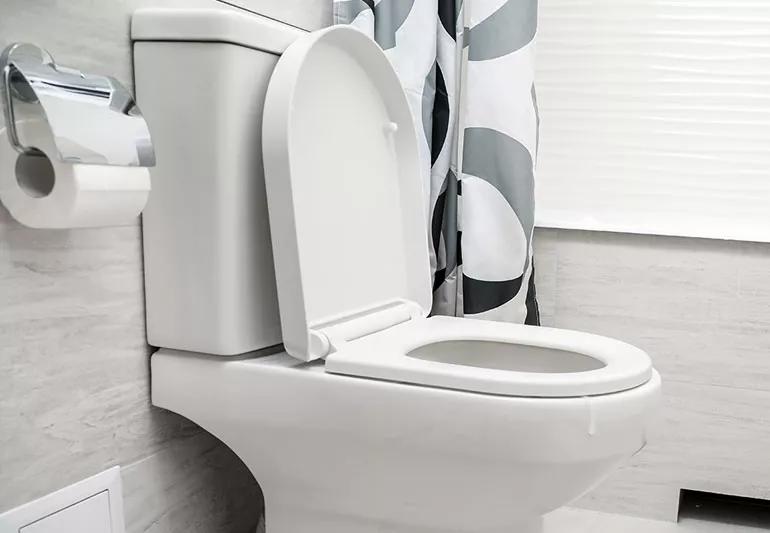It’s completely normal for the color of your urine to vary a little day by day, but it should stay within a certain range of yellow

Urine (pee) has been a useful tool for diagnosis since the earliest days of medicine. It can tell a lot about what’s going on in your body, from how hydrated you are to whether you might have a urinary tract infection (UTI).
Advertisement
Cleveland Clinic is a non-profit academic medical center. Advertising on our site helps support our mission. We do not endorse non-Cleveland Clinic products or services. Policy
Here’s a look at some of the things it can tell you from urologist Petar Bajic, MD.
Your urine is a mix of water, electrolytes and waste that your kidneys filter out from your blood.
When you’re healthy and hydrated, your urine should fall somewhere between colorless and the color of light straw and honey. When you don’t consume enough fluids, your urine becomes more concentrated and turns a darker yellow or amber color.
“It’s completely normal for the color of your urine to vary a little day by day,” says Dr. Bajic. “But it should stay within a certain range of yellow.”
But what about when the color changes and moves to other sections of the crayon box? First, relax: There may be a simple explanation. Certain foods, antibiotics, laxatives and dyes can temporarily turn your urine a different hue.
Of course, that attention-grabbing color may be a sign of a bigger issue, too: “If you see something really unusual, don’t just ignore it,” advises Dr. Bajic.
So, let’s explore what is normal and what deserves some extra attention.

Clear urine sends a clear message: You may be drinking too much water.
Now, it’s true your body needs water to stay hydrated and function properly. The basic rule of thumb is to aim to drink 64 ounces of fluid a day to keep your system operating at peak efficiency.
Advertisement
Surging over that total can make your urine start to look like the water you’re guzzling down. (Plus, you’re going to be making a lot of trips to the restroom as your body works to drain out all that extra fluid.)
An occasional clear pee isn’t a big deal. But if it’s an ongoing issue you may be lowering salt and electrolyte levels below what your body needs.
What if your urine is clear and you’re not knocking back glass after glass of water? That may signal an underlying kidney problem or diabetes. In this situation, it’s best to see a doctor to get answers.

Good news! You’re in the preferred section of the urine color chart.
Urine that falls in the pale yellow category signals that you’re healthy and hydrated, says Dr. Bajic. That yellowish color, by the way, is caused by a pigment called urochrome produced by your body.

Darker urine is your body talking to you. What’s it saying? Basically, drink some water, states Dr. Bajic.
The darker hue is a sign of mild dehydration. Essentially, your urine is a more concentrated mix due to a lower-than-needed level of fluid in your system. This can happen if you’ve been outside sweating on a hot day or just finished a workout.
Refill your tank and the color should go back to normal.

Your dehydration level just crossed a line into a more worrisome status. Get fluids in ASAP.
A flow that’s dark brown also could be caused by bile getting into your urine, a sign of liver disease. Rusty or brown-colored pee also is a symptom of porphyria, a rare disorder affecting the skin and nervous system.
If rehydrating doesn’t lighten up your urine, see a healthcare provider.

The explanation for this unexpected turn on the color wheel could be as simple as what you ate, notes Dr. Bajic. If beets, blueberries or rhubarb passed through your lips within the last day or so, you may be seeing the results.
If you haven’t eaten anything like that, though … well, there may be a reason for concern. Pink or reddish urine could be a sign of:
Contact a provider as soon as possible if the color doesn’t return to yellow.

You may not be drinking enough water if your pee looks orange. Or you could have a liver or bile duct condition. Or it could be food dye or medications.
Rehydrate first and contact a provider if the orange color doesn’t disappear.
Advertisement

OK … this is definitely different.
Most likely, it’s the result of something you ate (think heavily dyed foods) or a medication, says Dr. Bajic. But a rare genetic disease involving hypercalcemia can also turn your urine blue or green. Ditto for certain bacteria that can infect the urinary tract.
See a healthcare provider if you continue to urinate this color.

Urinary tract infections (UTIs) and kidney stones can cause urine to become cloudy. Once again, dehydration also could be the culprit.
Drink plenty of water and call a doctor if the symptoms persist.

The explanation here could just be basic hydraulics, says Dr. Bajic. Basically, you’re emptying a lot out of your bladder and stirring up toilet water a bit more than usual with a heavy and intense stream.
But foaming or fizzing also could indicate excess protein in your diet or a kidney problem.
See a doctor if this happens consistently.
You can tell a lot just from looking at your urine. But medical professionals can tell a lot more from doing the kind of sophisticated analysis that comes with a urine test during a regular physical examination.
You’re not just putting urine in that cup when during a doctor’s appointment. You’re providing information — and that can be one of the best things you can do for your health.
Advertisement
Learn more about our editorial process.
Advertisement

Urine can contain bacteria, viruses and more — don’t drink it or use it to clean wounds

Don’t ‘go with the flow’ if you have issues with urge incontinence or a contagious infection

Going seven times a day is average, but more or less can be OK, too, as long as you’re not experiencing drastic changes

Pee is usually odorless, but if it’s stinky, your diet is the most likely culprit

Find out whether you should head to the bathroom after the bedroom

‘Morning wood’ is a natural bodily function and a sign of sexual health

Cranberry juice and cranberry pills may prevent future UTIs when taken consistently

Only antibiotics will cure a UTI, but home remedies could help prevent future infections

If you’re feeling short of breath, sleep can be tough — propping yourself up or sleeping on your side may help

If you fear the unknown or find yourself needing reassurance often, you may identify with this attachment style

If you’re looking to boost your gut health, it’s better to get fiber from whole foods